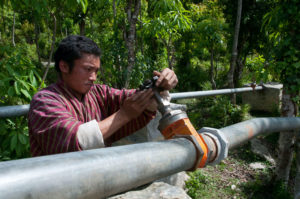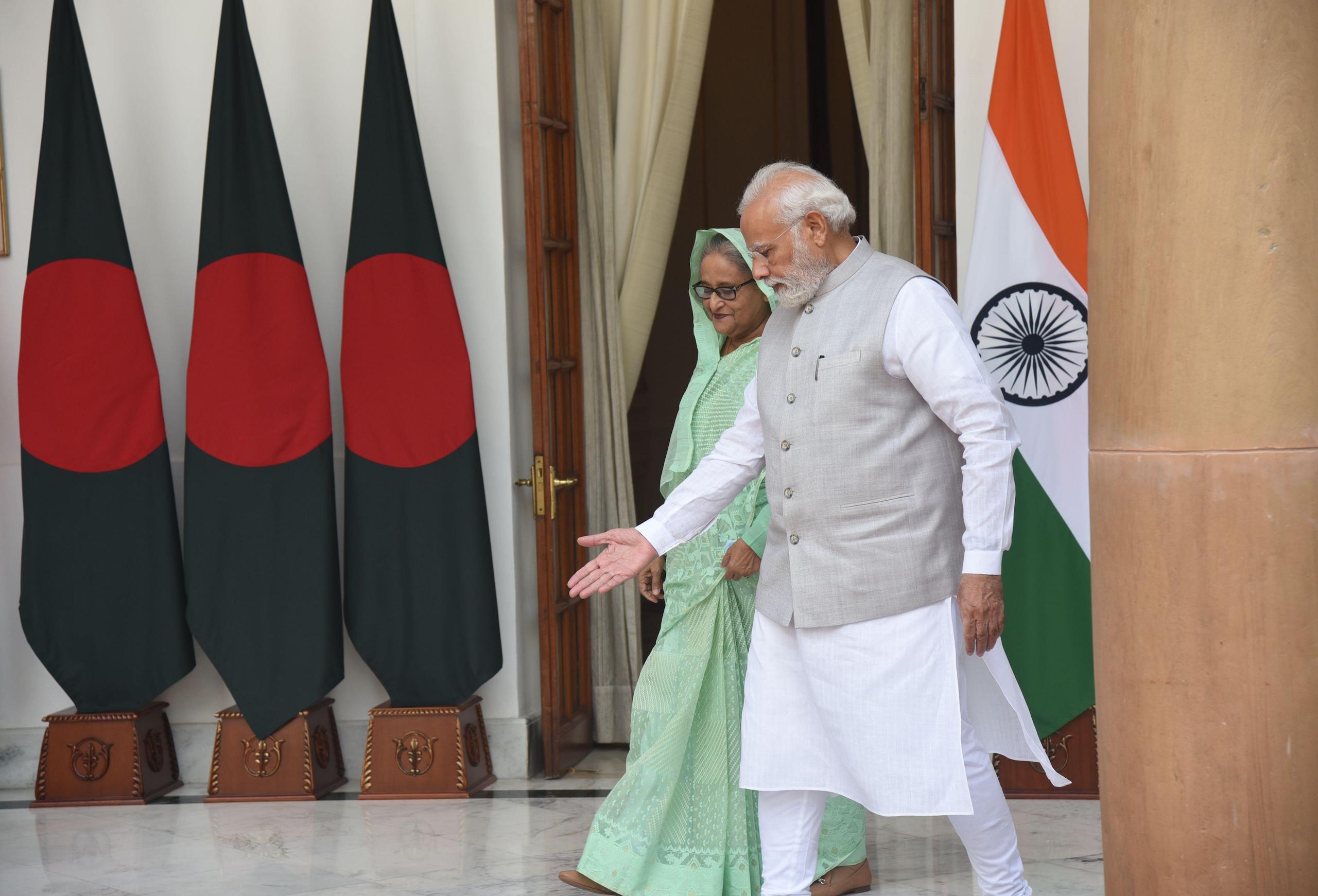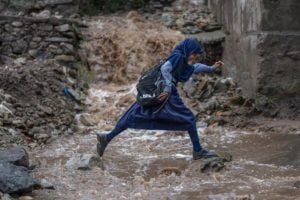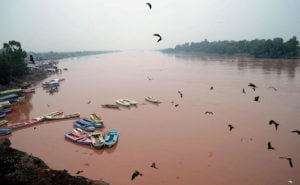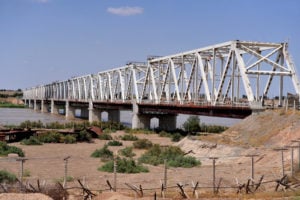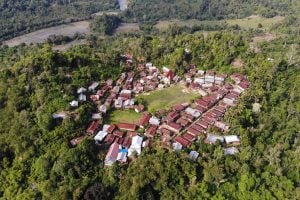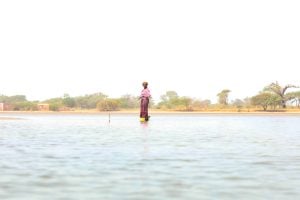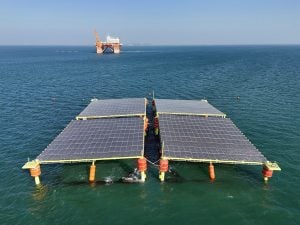Water in South Asia has always had a complicated history, right from early civilisations to the present day, where rivers are divided by political boundaries. Despite a shared tumultuous past, and often because of it, South Asia remains one of the least integrated regions in the world, despite its abundant resources and shared risks. In pursuing economic security, river basins have primarily been used for agriculture and energy, but are seldom seen as cohesive units that also require safeguarding.
The looming threat of climate change exacerbates existing tensions between riparian countries, presenting new challenges to achieving sustainable water management. With changing precipitation patterns, melting glaciers and increasing frequency of extreme weather events, including rising heat, the availability of the region’s water resources is becoming increasingly unpredictable and vulnerable. This unpredictability threatens food, energy and health security, as well as development goals, further straining relations between countries reliant on shared rivers.
While there are existing agreements between South Asian countries on water management, they are outdated and do not address the threats posed by climate change to shared water resources. Furthermore, most are bilateral, proving largely ineffective given that several South Asian countries share rivers, which compound climate challenges. Climate change means India’s river basins could face severe deficits by 2030, impacting some of the most populous regions in northern and central India unless urgent and concerted action is taken. Approximately one-fifth of India is struggling with drought-like conditions, while a staggering 70% of its water sources are contaminated. Nepal ranks as the world’s 4th most climate-vulnerable country, grappling with recurrent disasters such as floods, glacial lake outburst floods and landslides annually. In Pakistan, weather extremes are rising as the country received over 190% of its normal rainfall in 2022, causing devastating floods.
Countries like India and Pakistan are undergoing population growth, poverty and rapidly changing physiography, leading to increased demands for water and food supplies. Regional climate cooperation in South Asia is paramount if any country is to deftly adapt to a changing climate and avoid conflicts arising from highly contentious shared resources. While opportunities to update existing treaties and engage in dialogue exist, political will and domestic pressures continue to remain obstacles.
The problems of bilateralism
Water security in South Asia has undergone a notable transformation, characterised by growing distrust among neighbours and a high prevalence of domestic political instability. The current bilateral frameworks on climate cooperation are not immune to these geopolitical and domestic shifts, emphasising the need for cooperative regional dialogues.
Existing regional treaties are primarily bilateral in nature, focused on sharing mechanisms or dictating energy usage and storage. However, these treaties are often contentious, marked by unequal principles and fail to address the long-term health of rivers. For example, the Indus Water Treaty (IWT), initially intended as a conflict prevention mechanism between India and Pakistan, remains controversial. India issued a notice to Pakistan to modify the 64-year-old treaty in 2023, presenting an opportunity to adopt a more needs-based approach that considers environmental impacts and future risks, but there has been little movement on this front. Furthermore, the exclusion of China and Afghanistan from the IWT neglects the other two riparian countries that also share the Indus basin.
With growing demand on both sides, New Delhi and Islamabad have made periodic incendiary statements on water usage, with the rivers becoming tools in larger political grievances. Incidents such as the targeting of engineers involved in flood protection efforts by Pakistani militants in Kashmir in 2012, in response to India’s alleged violations of the IWT, and India’s proposed diversion of the Indus River following the 2019 Pulwama attack, underscore the volatile nature of water-related disputes.
South Asia urgently requires an integrated approach to water management that accounts for climate-related changes and uncertain future weather events. The current system of political posturing only serves to impede progress, while alterations in water cycles and rising populations persist. An amended IWT could address this growing demand and mitigate climate change’s impact on water cycles.
We need greater imagination in the region to see what is possible, and not only what is immediateAmbika Vishwanath, Sanya Saroha
Many of these treaties fail to adapt to changing realities and are often subject to divergent national interests. In the context of India and Nepal, dissatisfaction on sharing water resources persists despite the signing of six treaties and several memorandums of understanding. Nepal has accused India of constructing high roads, barrages and other infrastructure that disrupt water flow and cause floods, while Indian states have also accused Nepal of development activities leading to floods in Bihar and Uttar Pradesh and of not implementing adequate flood protection projects in its region.
Nepal and India have some of the best open channels of communication in the region when it comes to water. However, certain agreements such as the Kosi Agreement (1954), the Gandak Agreement (1959), and the Mahakali Treaty (1996) have been criticised by Nepal, who contends these are not equitable and were imposed by India, leading to a fluctuation of trust between the two countries. Meaningful implementation of these agreements could strengthen communication channels for water sharing between the two.
Internal political disagreements often hinder agreements between nations as well. The long-pending Teesta water agreement between India and Bangladesh demonstrates how domestic politics create barriers to international treaties. A once-robust river, infrastructure development, including barrages and hydroelectric plants and changes in water availability and rising temperatures, have reduced the river’s flow. The ruling party of West Bengal has blamed the central government, other states of India and Bangladesh for releasing water from barrages at inappropriate times, indicating its significance as an electoral issue. This politicisation has resulted in West Bengal obstructing the signing of what could have once been an effective water-sharing agreement between the two countries.
The way forward: strengthening transboundary diplomacy
At present, none of the existing water-sharing treaties and agreements incorporate climate considerations, except for the 2023 Bhutan-India flood forecasting scheme. While all eight South Asian countries are signatories to the Paris Agreements and have established nationally determined contributions (national plans to reduce emissions), these commitments primarily focus on emissions reduction and clean energy.
There remains a gap in understanding the intricate relationship between water and climate, as transboundary river basin treaties lack a strong climate lens. Recognising water as a vital resource for ecological integrity, climate resilience, human wellbeing and socioeconomic development is essential, moving beyond its use as an object of geopolitical contestation or national economic growth.
Despite long-standing advocacy by experts lobbying for a better regional approach with research that focuses on environmental and human security, learning from international experiences and robust regional mechanisms, challenges persist due to domestic and geopolitical tensions and the lack of political will. Even when will might have existed, larger security considerations often play a stronger role. While there have been some successful community-level initiatives, such as early warning systems between villages across the India-Nepal border, or the Brahmaputra dialogues between India, China, Bangladesh and Bhutan, joint efforts between India and China on glacial melt, scaling up and fostering greater cross-border trust has proved difficult.
Promisingly, initiatives focused on climate change that do not wade into the subject of water sharing, such as those of the International Center for Integrated Mountain Development (ICIMOD), a Kathmandu-based intergovernmental organisation, have seen some success. They emphasise people-to-people diplomacy and provide a platform to openly discuss climate issues with a data-driven approach.
Dialogue on climate may serve as a pathway for South Asia to engage in discussions on integrated water management, an often emotive and complicated issue. Collaborative strategies are needed to address these pressing challenges and transition from bilateral to regional water management for a more cohesive, cooperative and equitable region. We need greater imagination in the region to see what is possible and not only what is immediate.
This article has been co-published by South Asian Voices (Stimson Center) and The Third Pole
